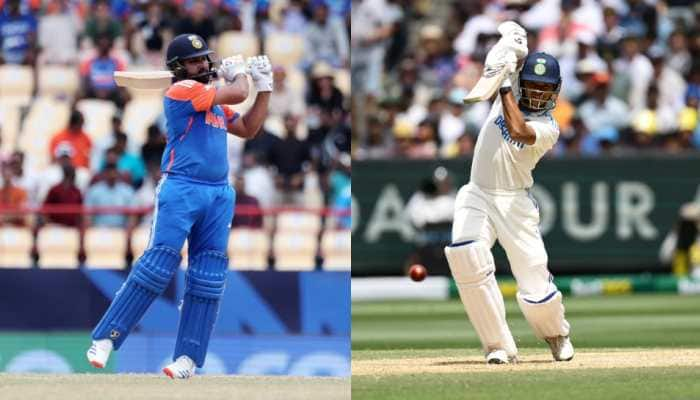World Liver Day: 15% Of People In India Suffer From Fatty Liver Disease, Says Data
It was also found that around 70 per cent of people in India suffer from visceral fat obesity. hese findings are based on data from 7,000 healthy and symptomatic individuals who underwent liver screening in the last one year at NURA Health Screening Centre.
- People with heavy alcohol consumption, obesity, Type 2 diabetes, chronic viral hepatitis, and a family history of liver diseases are more prone to liver diseases
- The most common types of liver diseases in the country include Viral Hepatitis, Alcoholic Liver Disease and Non-Alcoholic Fatty Liver Disease
- Regarding viral Hepatitis, while A and E are food-borne and relatively harmless, B, C and D are blood-borne and can lead to liver failure and liver cancer
Trending Photos
) File picture (representational purpose)
File picture (representational purpose) World Liver Day is celebrated across the world on April 19 to raise awareness about liver diseases. It focuses on educating people about the severity, early detection, and prevention of liver diseases. According to studies, globally, about 20 lakh people die yearly due to liver diseases. Around 70 per cent of people in India suffer from visceral fat obesity and 15 per cent from fatty liver, with men more commonly affected than women. These findings are based on data from 7,000 healthy and symptomatic individuals who underwent liver screening in the last one year at NURA Health Screening Centre.
Dr Tausif Ahmed Thangalvadi, Medical Director, NURA, said: "Such high prevalence of visceral fat obesity and fatty liver among otherwise healthy and asymptomatic people is striking. What is even more alarming is that fatty liver was noted across all age groups, with detection in people even as young as 25 years of age. Among those who had fatty liver, nearly 2-3 per cent also had associated minimal liver injury."
According to the doctor, certain characteristics put individuals at a higher risk of developing liver diseases, including heavy alcohol consumption, obesity, Type 2 diabetes, chronic viral hepatitis, exposure to hepatotoxic substances, and a family history of liver diseases.
Liver diseases are a growing concern in India, with a significant burden of morbidity and mortality. According to the World Health Organization (WHO), liver diseases are the tenth leading cause of death in India, accounting for 2.4 per cent of all deaths. The incidence of liver diseases is estimated to be around 10-15 per cent of the population, with a higher prevalence in rural areas.
The most common types of liver diseases in the country include Viral Hepatitis, Alcoholic Liver Disease and Non-Alcoholic Fatty Liver Disease (NAFLD). Regarding viral Hepatitis, while A and E are food-borne and relatively harmless, B, C and D are blood-borne and can lead to liver failure and liver cancer. According to the Indian Council of Medical Research (ICMR), the prevalence of hepatitis B and C in India is estimated to be 4-5 per cent and 1-2 per cent, respectively.
Thangalvadi said: "Early identification of liver diseases is crucial for effective management. Fortunately, the liver is a very strong organ which can handle minor injuries by itself. The symptoms arise only after a certain amount of damage has occurred which suggests that liver symptoms should always be taken seriously. Some of the earliest symptoms are fatigue, loss of appetite, and nausea, and vomiting. The other common symptoms of liver disease as it progresses are jaundice, pain in the abdomen, swelling in the legs and abdomen, dark urine, and pale stool."
Dr Vikram J Rao, Speciality- Department of Gastrointestinal Surgery and GI Oncology, Belenus Champion Hospital - Sarjapur Road, Bengaluru, said: "In the last century, knowledge about liver regeneration has rapidly evolved from a truly mythical black box event into a growing understanding of the pathways involved in this amazing complex multistep process.
Also Read: World Liver Day 2023: 5 Yoga Asanas And Meditation Techniques To Boost Liver Health
Today, liver surgery is routinely and safely accomplished for malignant and benign diseases. This substantial progress in both resection and transplantation relies on the ability of the liver to regain most of its functional mass within two weeks. Many tumours that were previously considered to be unresectable are now amenable to complete resection through induction chemotherapy and innovative treatment strategies to increase liver remnant volume, Dr Vikram Rao said.
Because of the increased success of liver surgery, more patients with underlying liver disease are now considered suitable candidates for liver resection. One of the landmark advances in liver transplantation is the ability to use segmental liver grafts obtained from either a deceased donor or a living donor. In the latter situation, the success of the procedure relies on relatively rapid hepatic regeneration in both donor and recipient, he explains.
Also Read: World Liver Day 2023: 5 Causes Of Liver Diseases; Check Symptoms Of Fatty Liver
New challenges lie ahead in the use of therapeutic strategies to enhance liver regeneration in patients in whom normal regeneration fails and thus push the possibilities of liver resection to the next level, Rao stated.
Stay informed on all the latest news, real-time breaking news updates, and follow all the important headlines in india news and world News on Zee News.
Live Tv







)
)
)
)
)
)
)
)
)
)
